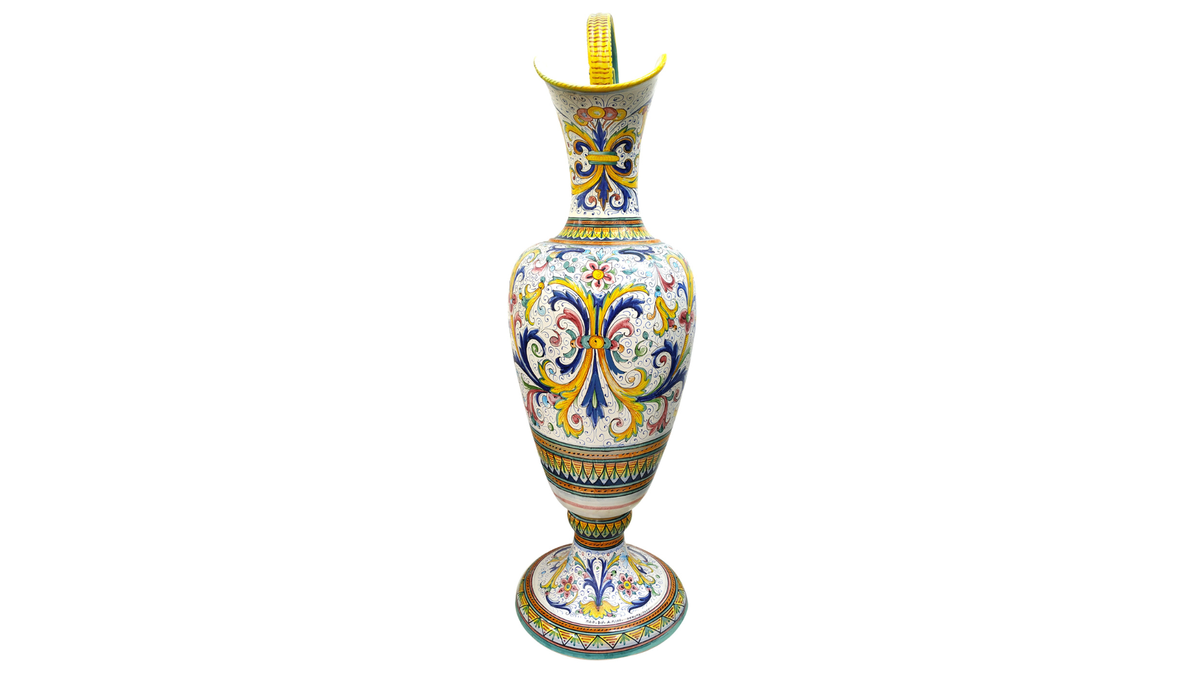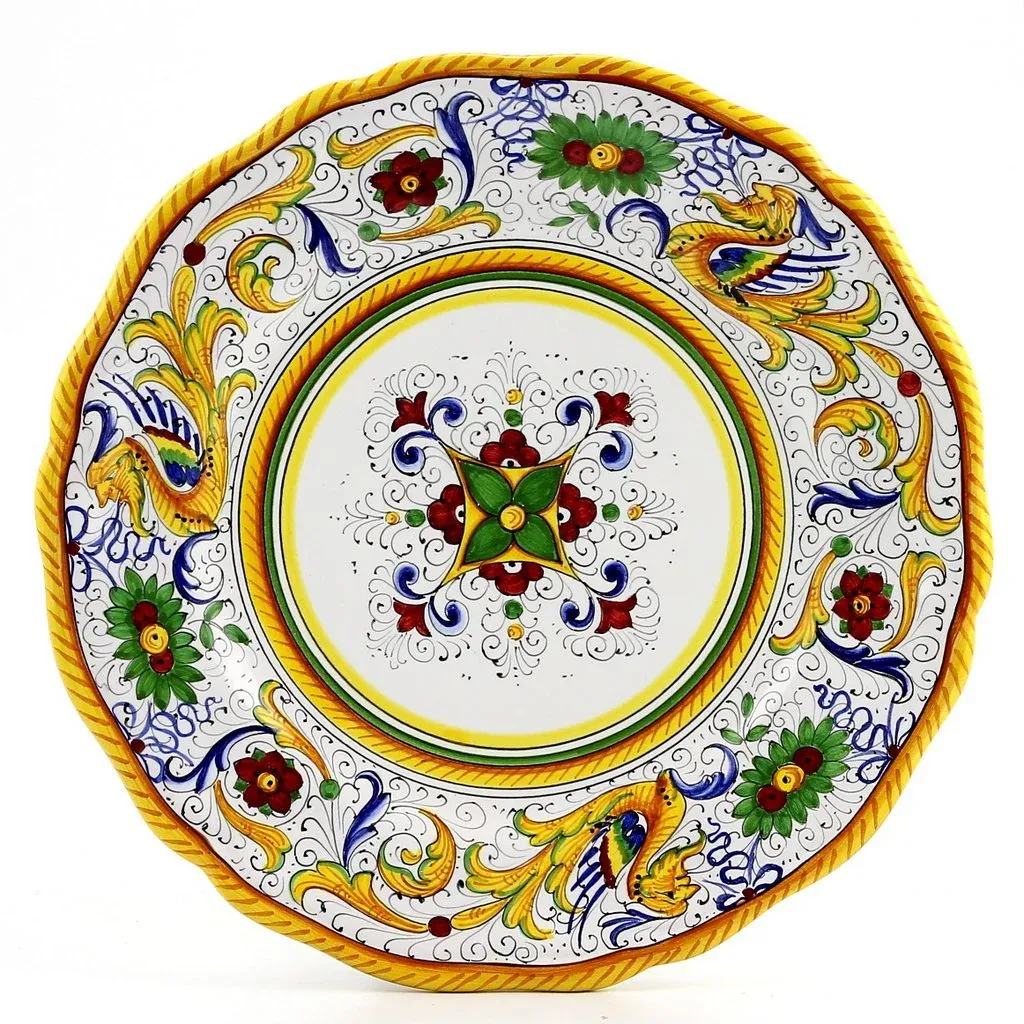Deruta, a renowned name in Italian ceramics
Perched on a hilltop in the heart of Italy’s Umbria region, the town of Deruta is internationally renowned for its exquisite hand-painted ceramics. For centuries, Deruta has been a hub of artistic production, where tradition, skill, and creativity come together to produce vibrant, intricate pottery.

The story of Deruta ceramics begins in the Middle Ages, with pottery production in the town dating back to the 13th century. However, it was during the Renaissance that Deruta emerged as a prominent centre for ceramic production. The 15th and 16th centuries marked a period of remarkable growth and innovation, as Deruta's artisans gained widespread acclaim for their intricately crafted and elaborately decorated majolica.
Deruta’s proximity to key trade routes, including access to high-quality clay from nearby regions, played a crucial role in its success. The Renaissance, a time of cultural and artistic revival, deeply influenced the designs and motifs characteristic of Deruta ceramics. During this period, the town’s workshops were often commissioned to create bespoke pieces for affluent patrons, including Italian nobility and the Catholic Church, cementing Deruta's reputation as a leading centre of ceramic art.
Creating Deruta ceramics is a meticulous process that requires both skill and artistry. It begins with the careful shaping of clay into various forms, such as plates, bowls, vases, and tiles. Once shaped and dried, the clay is fired in a kiln to create a durable base known as 'biscotto.'
After this initial firing, the pieces are coated with a white glaze that provides a smooth, glossy surface—perfect for intricate hand-painted designs. Deruta ceramics are distinguished by their use of bright, vivid colours, particularly cobalt blue, yellow, green, and orange. These colours are applied using fine brushes, with designs often drawing inspiration from nature, mythology, and religious themes.
One of the most iconic patterns associated with Deruta is the 'Raffaellesco' design, named after the Renaissance artist Raphael. This pattern features dragon-like creatures, symbolising good fortune, surrounded by swirling motifs that convey a sense of movement and elegance. Other popular designs include floral patterns, geometric shapes, and scenes from classical mythology

Deruta ceramics are more than just decorative objects; they are a reflection of the town's rich cultural heritage. For centuries, these ceramics have been an integral part of daily life in Deruta, used in everything from serving meals to adorning homes and churches. The intricate designs often carry symbolic meanings or tell stories, adding depth and character to their beauty.
Beyond their everyday use, Deruta ceramics have also played a significant role in religious and ceremonial contexts. Large platters and tiles were sometimes used to decorate the walls of churches and palaces, symbolising wealth, artistic patronage, and devotion.
Today, Deruta remains a vibrant hub of ceramic production, with numerous workshops and studios dedicated to preserving the town's centuries-old tradition. While modern technology has introduced new techniques, many artisans in Deruta continue to employ traditional methods of hand-crafting and painting ceramics.
The ceramics industry in Deruta has also evolved to meet the changing tastes of a global audience. Alongside classic designs, contemporary Deruta ceramics often feature more modern patterns, appealing to a broader range of customers. Despite these innovations, the core values of craftsmanship, attention to detail, and artistic expression remain central to the creation of Deruta ceramics.
To celebrate and promote this cultural heritage, Deruta hosts several events and festivals throughout the year. Visitors to Deruta can explore its many workshops, museums, and galleries, witnessing the creation of these exquisite pieces and even participating in the painting process themselves.





